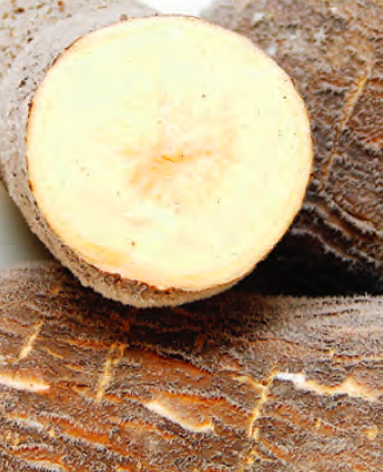Bioavailability of iron, zinc and provitamin A carotenoids in biofortified staple crops
 Summary of study1
Summary of study1
Location: Global
What we know: Biofortification of staple foods is one potential way of increasing micronutrient intake in resource limited populations.
What this article adds: A recent review found that the bioconversion of vitamin A (beta-carotene to retinol) in provitamin A biofortified crops (2.8:1 to 6.5:1) was more efficient than for non-biofortified foods (12:1). Vitamin A bioavailability is affected by dietary habits and food processing while iron and zinc utilisation is affected by phytate which is hard to limit. Evidence supports the focus on efforts to breed plants with increased micronutrient concentrations in order to decrease the influence of inhibitors and to offset losses from processing.
Biofortification seems to improve the nutrient density of stable food crops through conventional plant breeding, agronomic management or genetic engineering. Currently, the most common micronutrients targeted are iron, zinc, and provitamin A carotenoids, due to the high prevalence of deficiencies of these micronutrients among children under the age of 5 years and women of child bearing age in developing areas of Africa, Asia and Latin America. Since a key issue in these areas is low concentration of these micronutrients in the most commonly consumed foods, biofortification of staple food crops has been suggested as a way to help alleviate these deficiencies. Biofortification is particularly relevant in the current economy, when price increases for non-staple foods further curtail dietary diversity and food and nutrition security among the poor. In principle, this strategy allows the population to grow and consume the same foods they are accustomed to eating while improving their micronutrient intake. Although concentrations of micronutrients in many of these biofortified crops will remain relatively low, staple foods are eaten in such large quantities in many at-risk populations that, over time, the micronutrients consumed in this manner can enhance micronutrient status and prevent deficiency.
 A review of recent studies of biofortified crops aims to assess the micronutrient bioavailability of biofortified staple crops in order to derive lessons that may help direct plant breeding to infer the potential efficacy of food-based nutrition interventions. Key findings of the review were as follows:
A review of recent studies of biofortified crops aims to assess the micronutrient bioavailability of biofortified staple crops in order to derive lessons that may help direct plant breeding to infer the potential efficacy of food-based nutrition interventions. Key findings of the review were as follows:
Human studies provide the most reliable indication of the bioavailability of micronutrients in biofortified crops, whereas animal and in vitro studies are useful for within-study comparisons of absorption factors and screening of the varieties developed through breeding. The results of the human bioavailability2 studies for iron (fractional absorption 2.6-9%) and zinc (17-20%) in biofortified crops were consistent with the results of studies in non-biofortified plants. In contrast, the bioconversion of beta-carotene to retinol in the provitamin A biofortified crops, which varied from 2.8:1 to 6.5:1, was more efficient than the average bioconversion of 12:1 estimated for non-biofortified foods.
Concerns about the bioavailability of micronutrients from crops are much different for minerals than for carotenoids. The bioavailability of provitamin A carotenoids is most affected by dietary habits and food processing. The addition of fat to a meal improves absorption, while extreme food processing, such as treatment with high heat, can result in substantial carotenoid loss. The bioavailability of iron and zinc, on the other hand, is influenced primarily by the presence of anti-nutrients such as phytate. Although phytate levels can be reduced through plant breeding, decreasing them too much may diminish or eliminate the benefits that phytates provide to plants and, potentially, to humans. Therefore, to minimise the negative effects of food processing and the factors that adversely influence bioavailability, biofortification to increase micronutrient concentrations in staple crops remains the primary goal.
1 La Frano. M et al (2014). Bioavailability of iron, zinc and provitamin A carotenoids in biofortified staple crops. Nutrition Reviews, vol 72 (5): pp 289-307.
2 Bioavailability is the fraction of an ingested nutrient that is available for utilisation in normal physiological functions and/or for storage.

